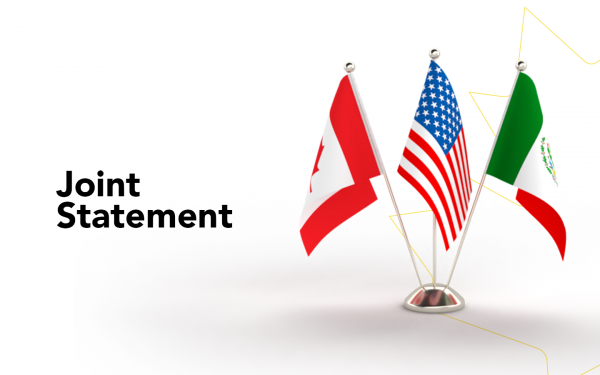The AESO’s approach to data centre development will cost us the AI economy.
As published on LinkedIn
Alberta stands at a crossroads. The province has positioned itself as Canada’s leader in energy innovation and economic diversification, proudly declaring itself “open for business” to transformative industries like artificial intelligence and digital infrastructure.
Yet today’s Alberta Electric System Operator (AESO) decision threatens to undermine these ambitions.
The AESO’s announcement of its interim data center allocation methodology represents a long-awaited milestone that provides much-needed clarity for the industry. The additional certainty is welcome, and the numbers reveal both the scale of opportunity and the challenge we face—29 proposed projects representing more than 16 gigawatts of total demand are seeking grid connections. However, the AESO’s decision to limit extensive load connections to a total of 1,200 megawatts and allocate this across potentially 15 projects between now and 2028 appears fundamentally misaligned with the province’s stated policy objectives: to attract large hyperscalers and catalyze a data center industry at scale.
The problem is stark: with demand exceeding available allocation by more than 13x, Alberta is essentially rationing opportunity at a moment when global competition for data center investment has never been fiercer. This 1,200-megawatt interim limit—spread across multiple years and projects—falls far short of what’s needed to compete for transformative investments.
The Stakes Are Higher Than Canadians Think
This isn’t just about one industry or one type of investment. Data centers are the physical backbone of the digital economy—they power everything from cloud computing and streaming services to the artificial intelligence revolution reshaping every sector of our economy. When Premier Danielle Smith and Minister Nate Glubish the Minister of Technology and Innovation, speak about making Alberta a global AI hub, they’re talking about attracting multi-billion-dollar investments that create thousands of jobs and generate significant tax revenue for decades.
But hyperscalers—the largest tech companies in the world—don’t build small. They think in gigawatt-scale terms because that’s what their global operations require. To put this in perspective, the City of Edmonton has a load of approximately 1,400 megawatts. A single hyperscaler data center can require that much or more. The AESO’s 1,200 megawatt total allocation, divided among multiple projects over several years, sends a clear message: Alberta isn’t serious about competing for their business. Or worse, they don’t understand what they need to operate their businesses successfully.
Missing the Mark on Market Dynamics
Perhaps more troubling is that the AESO’s pro-rata allocation approach will likely fragment this limited capacity among multiple smaller projects rather than enable the transformative, large-scale investments that drive real economic impact. Under these guidelines, smaller operators will compete for an already inadequate pie rather than established companies with long-term commitments to Alberta, making the significant investments needed for long-term prosperity and growth. This fragmented approach creates no lasting value for Albertans and undermines the transformative economic potential that legitimate data center development represents.
Capital Power has a project ready to move forward—up to 1,500 megawatts at our Genesee site west of Edmonton, where we are in active discussions with a significant North American data center provider about co-locating a large campus. This isn’t theoretical; we’ve already modernized Genesee into an efficient, lower-carbon generation site that can leverage our existing electrical infrastructure and decades of operational expertise in Alberta. Our project doesn’t compromise grid reliability or affordability for Albertans, as it would ramp online over multiple years, giving the market time to respond. Once complete, it would save Albertans $5 to $6 per month in transmission fees and inject millions of dollars in tax revenue.
However, projects like ours are time-sensitive and global in scope. Alberta is competing against jurisdictions across North America and beyond. Every month of regulatory uncertainty is a month our competitors use to attract the investment dollars that should be coming here.
Undermining Alberta’s Own Success Formula
Alberta’s electricity market has always prided itself on being open, competitive, and investor-led. This model has attracted billions in private investment and kept electricity costs competitive for consumers. When established players with generation assets already in place are constrained from using those investments to support economic growth, it undermines the very foundation of Alberta’s market approach.
The irony is that Alberta has every natural advantage in this competition. We have abundant, affordable electricity, a prolific natural gas industry, a stable regulatory environment, a skilled workforce, and existing industrial infrastructure. We also have a government that has explicitly committed to digital transformation and AI leadership. But with this announcement, we don’t have a regulatory framework or the ability to execute in alignment with Alberta policy objectives to move at the speed required to capitalize on these advantages.
The Cost of Thinking Small
The global data center market is expected to grow exponentially over the next decade, driven by AI, cloud computing, and digital transformation across every sector of the economy. This represents one of the most significant infrastructure investment opportunities of our generation. Alberta can either position itself to capture a meaningful share of this growth or watch from the sidelines as other jurisdictions reap the benefits.
The choice should be obvious. Alberta didn’t become an energy superpower by thinking small or playing it safe. We did it by recognizing transformative opportunities and having the courage to pursue them at scale. The same bold thinking that built our oil and gas industry, attracted petrochemical investments, and positioned us as a leader in renewable energy should guide our approach to data centers.
A Path Forward
The AESO’s methodology provides welcome immediate term clarity, but Alberta needs to evolve its regulatory framework to match the speed and scale required by global markets. This means recognizing that gigawatt-scale projects aren’t just viable—they’re essential for Alberta to compete effectively for transformative investment.
Alberta has spent years building its reputation as Canada’s most business-friendly province. Now is not the time to cap our potential, just as the most significant infrastructure opportunity of the digital age unfolds before us. Our competitors aren’t standing still, and neither should we.
The question isn’t whether Alberta can afford to think big about data centers; it’s whether we can afford not to.










